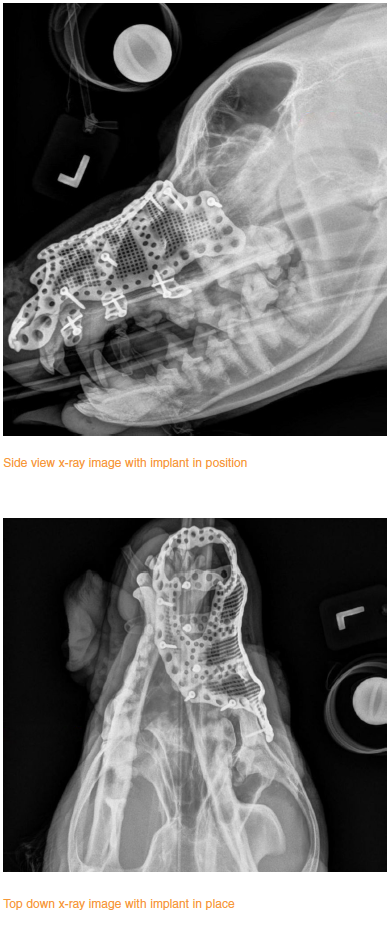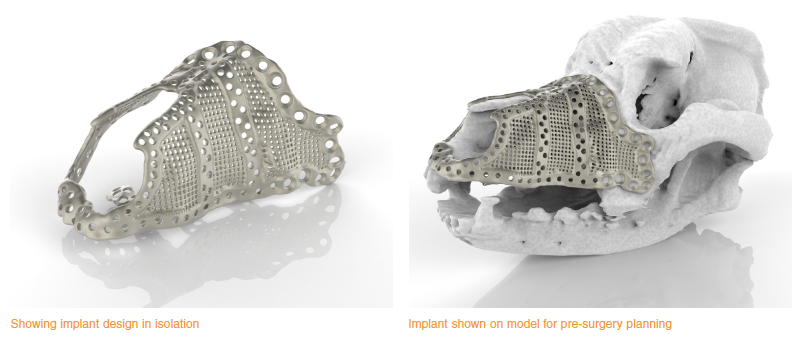Humans are the only animals that take on pets and the profound connections that we develop with our animal companions mean that we want to do everything in our power to keep them happy and healthy. We do this not just because we want it for them, but also because we want them to be with us, for as along as possible. The great tragedy of the profound love that we feel for our pets is that their lives are so much shorter than ours. Each loss is a tragedy and yet, as all pet owners know, we can’t help but put ourselves through it over and over again. The responsibility that comes with having that special kitty or pupper – or even ball python – is ensuring that it receives love, comfort, and appropriate medical care.
Taking proper care of a pet may mean only checkups and maintenance, but sometimes something extraordinary happens and for that, we need extraordinary veterinarians. Such was the case when a Canadian family’s seven-year-old Bernese Mountain Dog developed a significant tumor that required removal. The development of tumors in dogs as they age is relatively common, with more than half having one after reaching the age of 10. Unfortunately, the location of this tumor on the dog’s muzzle was going to required an excision that would remove a large portion of tissue and could significantly affect the dog’s quality of life. This required that the veterinarian develop a plan for addressing the affected area so that the dog would be able continue to lead a good life.
As such, veterninarian Julius Liptak of Alta Vista Animal Hospital in Ottawa, Canada worked with Germany-based Voxelmed to create a patient-specific maxillofacial implant. The implant itself was then fabricated at the Additive Design in Surgical Solutions (ADEISS) center in London, Ontario, a center arising from a partnership between Western University, the London Medical Network and Renishaw. Working back and forth between 3D model and data about the patient provided through 3D scans, an implant that met the surgeon’s specifications was created. This type of modeling and preparation also gave Dr. Liptak the ability to create a detailed plan for the procedure before having to actually undertake it, thereby reducing the chance of errors and decreasing the time necessary for the dog to remain under anesthesia while the operation took place. The creation of this implant meant that the dog’s nose structure did not have to be altered and the difference in his before and after appearance would be minimal. This was important not for the dog’s vanity, but rather in terms of his ability to breathe easily, eat well, and play comfortably.
 Not only the ability to create a prosthetic that was precisely right for this individual patient, but also the fact that 3D printing allows one to be fabricated so quickly was key to the success of the implant. As the tumor was continuing to grow, the area affected by it changed the topography of the affected area, so had the implant taken too long, it would have no longer been a proper fit. The ability of 3D printing to map complex geometries and do so very precisely is also part of what makes this kind of implant possible, as Voxelmed’s CEO and veterinary surgeon Jan Klasen explained:
Not only the ability to create a prosthetic that was precisely right for this individual patient, but also the fact that 3D printing allows one to be fabricated so quickly was key to the success of the implant. As the tumor was continuing to grow, the area affected by it changed the topography of the affected area, so had the implant taken too long, it would have no longer been a proper fit. The ability of 3D printing to map complex geometries and do so very precisely is also part of what makes this kind of implant possible, as Voxelmed’s CEO and veterinary surgeon Jan Klasen explained:
“Without additive manufacturing technology, it would have been almost impossible to reconstruct the dog’s maxilla after tumor removal, because the area was extremely complex in geometry. The implant had to have similar shape and functionality as the dog’s existing bone structure. Using additive manufacturing to maintain the original shape and function of the oral and nasal cavity ensures a high quality of life for the dog, just as a naturally shaped skull and maxilla helps the dog to breathe and eat easily.”
He continued, “To my knowledge, this is the first implant of its kind. Prior to this case, the majority of veterinary surgeons were unaware that the technology was even available. Similar reconstructions are now being planned in Germany and there is ongoing research into how animals can benefit from this procedure.”
The doggo was quickly able to breathe easily through his nose and after a couple of days of pain medicine, appeared to be making a full and complete recovery, going home after only one day in the hospital. The success of this medical intervention is just one more example of the inroads that 3D printing is making into medicine, whether human or animal, and the wider the realization of the benefits this type of manufacturing can provide. What was once out of reach for all but the most extreme of cases, is now becoming a routine part of the practice of medicine, both changing the face of medical practice in general and touching the lives of each patient individually.
What do you think of this news? Let us know your thoughts; join the discussion of this and other 3D printing topics at 3DPrintBoard.com or share your thoughts in the comments below.
[Source/Images: Renishaw]
Subscribe to Our Email Newsletter
Stay up-to-date on all the latest news from the 3D printing industry and receive information and offers from third party vendors.
You May Also Like
Profiling a Construction 3D Printing Pioneer: US Army Corps of Engineers’ Megan Kreiger
The world of construction 3D printing is still so new that the true experts can probably be counted on two hands. Among them is Megan Kreiger, Portfolio Manager of Additive...
US Army Corps of Engineers Taps Lincoln Electric & Eaton for Largest 3D Printed US Civil Works Part
The Soo Locks sit on the US-Canadian border, enabling maritime travel between Lake Superior and Lake Huron, from which ships can reach the rest of the Great Lakes. Crafts carrying...
Construction 3D Printing CEO Reflects on Being Female in Construction
Natalie Wadley, CEO of ChangeMaker3D, could hear the words of her daughter sitting next to her resounding in her head. “Mum, MUM, you’ve won!” Wadley had just won the prestigious...
1Print to Commercialize 3D Printed Coastal Resilience Solutions
1Print, a company that specializes in deploying additive construction (AC) for infrastructure projects, has entered an agreement with the University of Miami (UM) to accelerate commercialization of the SEAHIVE shoreline...
































